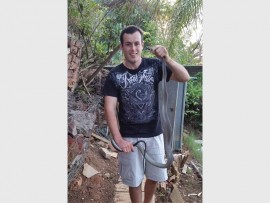It’s snake and frog breeding season, but don’t panic
An insight on how to remain unharmed when confronted by the feared reptile.

FOLLOWING a change in season and an increased frog and snake presence, snake catcher, Nick Evans, shared his insights on the matter and how to remain unharmed when confronted by the feared reptile.
“Now that we are having warm weather, snakes are on the move. They’re looking for food, and mates. After some decent rain, frog activity has also increased, so there is a lot of food around for snakes,” he explained. According to Evans, many people in the Highway area have been encountering frog-eating species, such as the harmless herald snake, the venomous but not lethal night adder and the highly venomous Mozambique spitting cobra (MSC).
All three snake types are common in the area and those three species often venture into gardens because a lot of gardens are occupied by frogs – a snake magnet. “A lot of people know this fact and try to exterminate frogs, but this is wrong and will affect us and of course, the environment.
“Frogs play a key role in the food chain, as prey and as predators. They consume a huge amount of insects every night, which is great news for us. If you don’t want frogs, it’s best to not have a pond or water feature,” he advised.
Evans said that Heritage Day was a busy day for snake catchers – he was called to remove four large MSCs, which are very common throughout the greater Durban area. These snakes are responsible for the most snake bites in South Africa and have a potent cytotoxic venom that they are able to spray up to two metres away, and they also bite. However, like all snakes, the MSC would rather flee than fight; bites only occur when the snakes need to defend themselves.
On the day, Evans said he tended to four calls in the area. “The first one was in the morning in Queensburgh, where I went sliding down a hill after the large snake without any eye-protection, as the snake was a suspected black mamba. A tricky catch, but I eventually managed. It was a large male, measuring at an impressive 1.5m. The next three spitting cobras unbelievably came from one property in Northdene, and they were not even all together at the same time,” he explained.
The first call he responded to was made by the house owner after noticing a large spitting cobra in the corner of his garden; however, by the time Evans got to the scene, the snake had disappeared. “Upon showing me where the snake had been hiding, we discovered a female cobra around 1.2m in size and, about two hours later, I was called back to the same property; the large cobra had returned. I caught it and it saw how big it really was: a huge male, at 1.7m long, which is longer than average. Amazingly, before I left the property, another large male cobra over a metre long had slithered up the bank,” he said.
Even for a snake catcher, this was an incredible scenario and the first of its kind for Evans. He said the reason for so many snakes on that property was because it borders a nature reserve and has what he considers a nice shelter for snakes. “The main reason why more snakes kept coming was that the first snake to take shelter in the garden was the female. As it is breeding season, she leaves behind pheromones, which male snakes will sense using their forked tongues, and will follow.
“It’s not just frog-eating snakes that have been active. The common and harmless spotted bush snakes have been spotted frequently around gardens and homes in the area, hunting geckos,” said Evans. The notorious black mambas have also been making appearances, Nick recently removed a two metre specimen from an old shed in Westville. He advised that if you see a snake in your home or garden to not panic.
“It will not hurt you if you do not hurt it. Remember, it is just looking for food and shelter, not people to harm. The best thing to do is to call someone who deals with snakes. They can advise you on what to do, or they can come and remove it. Stay at a safe distance and keep an eye on the snake, and watch where it goes. Snakes are masters of disappearing, and once they have found a place to hide, they can be difficult to detect.
“If you have no idea what the snake is, do not try and catch it yourself. It is also advisable to not even touch a dead snake. Remember, snakes are playing a very important role in our environment, keeping rodent, frog and lizard numbers in check. They do not need to be feared, just respected,” he said.
For snake removals or educational work, contact Nick on 072 809 5806 or e-mail nickevanskzn@gmail.com.





